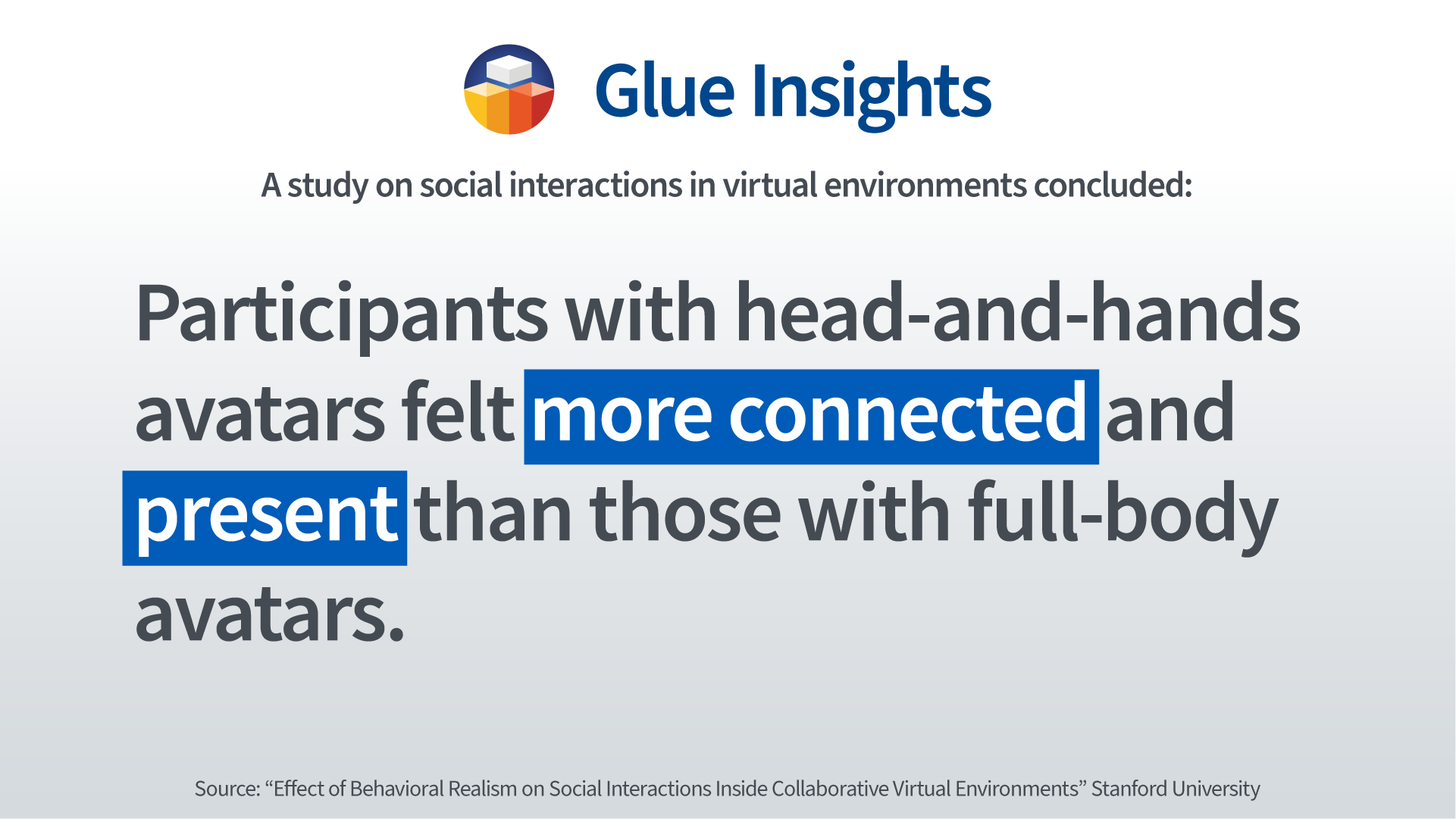Stanford research on social interactions inside collaborative virtual environments concluded that participants with head-and-hands avatars felt more connected and present than those with full-body avatars.
Here is why: 👇
1️⃣ When using a full-body avatar, a user is not able to control every body part rendered which leads to a sense of detachment and less personal interaction because a user can’t communicate their body language to the fullest.
2️⃣ On the contrary, users using floating head and hands avatars reported higher interpersonal attraction and self-presence because their avatars were able to reflect physical movements accurately creating a high level of non-verbal communication.
The type of avatar has a significant impact on the feeling of presence and the quality of social interactions experienced by users. This is important to understand when choosing a VR platform for your team.
Learn more about why avatars are crucial for virtual collaboration.
Source: “Effect of behavioural realism on social interactions inside collaborative virtual environments”


